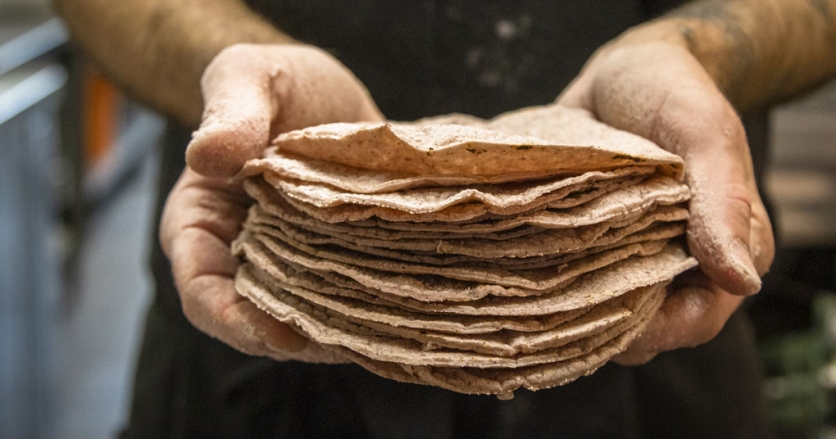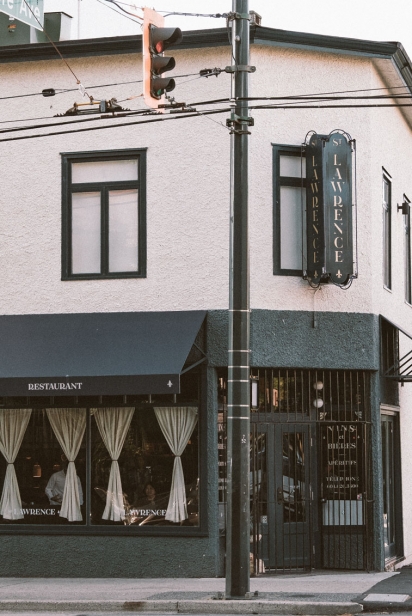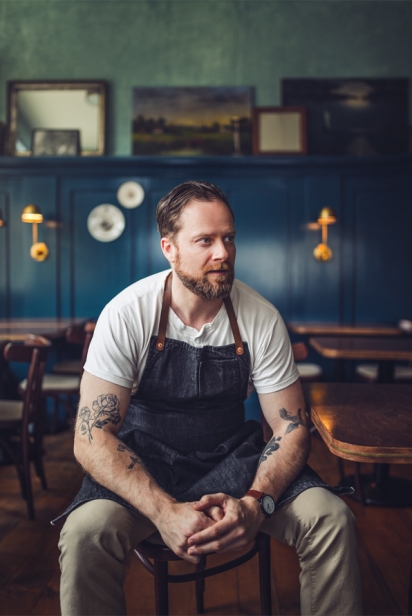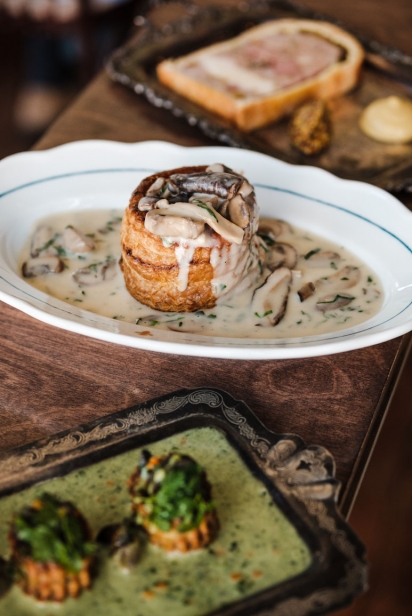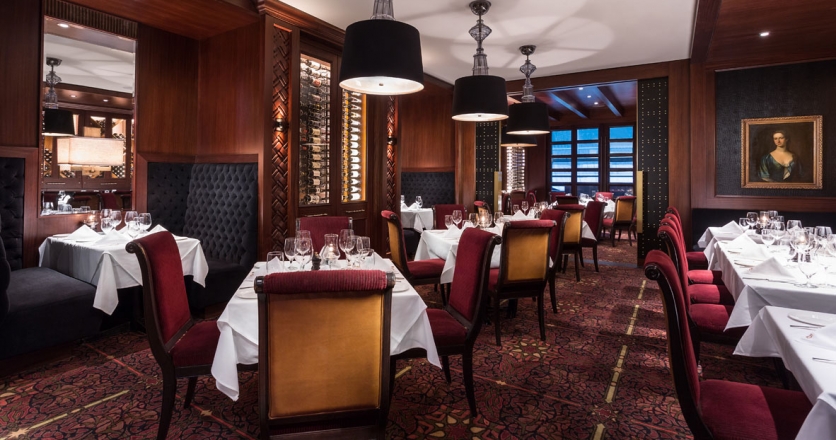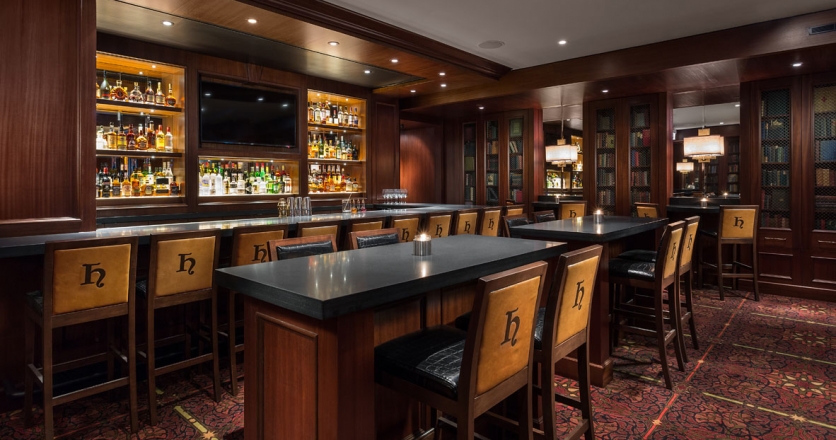Cheque, Please
Some cities have theatre; others live music. But Vancouver’s culture is all about our food scene. We probably talk more about dining, new restaurants and spot prawn season, the fall wine release and where to go for xiao long bao than we do anything else except housing prices and maybe those coyotes stalking joggers in Stanley Park.
When the pandemic shut down indoor dining, the mourning for our favourite dim sum palaces, sushi bars, burger joints, French bistros and Italian osterias was real and intense.
Now restaurants are back, and so are we — in fact, Open Table reports that nearly a third of B.C. diners intend to eat out more frequently now than we did before pandemic restrictions were put in place.
But here’s the thing. The restaurant scene that’s emerging after all these months is not the same one that closed its doors on March 17, 2020. In many ways, restaurants are facing a reckoning that’s been a long time in the works. And this time, we customers will have to pay the price. Literally.
Here’s what you can expect.
Staffing shortages are affecting everything
“One day it’s the supply chain, the next it’s the mask mandate, the next it’s a staff shortage,” says Megan Buckley, the chief operating officer for Hy’s of Canada. “It’s tough. It’s really tough.”
Few sectors have been as directly affected by pandemic restrictions as the hospitality industry. Restaurants closed, opened and closed again. They cut seating in half. They installed Plexiglas barriers and hand-sanitizing stations. They began doing takeout even if they’d never done it before. They built patios on sidewalks and parking spots. They wore masks, took the masks off, put the masks back on, and were told to make sure guests wore them, too.
Most of all, every day, they dealt face to face with a public that was confused, scared and hangry.
Even battle-scarred servers with decades of experience have been driven to tears by the abuse they’ve received. Meanwhile, laid- off back-of-house staff found that their relationships were better when they didn’t work 14 to 16 hours a day in a hot, high-stress kitchen. They were drinking less, eating better, feeling happier. So why would they go back to a job that pays poorly and was destroying their mental and physical health?
People have left the industry in droves. Every restaurant, high end and low, has been affected by the staffing shortage. Many have been forced to find workarounds by closing for lunch, closing early, closing two or three days a week or cutting menu items, especially the labour-intensive ones.
“It’s challenging. It’s so challenging,” Buckley says. “We’re for- tunate that we have such strong teams, and we did keep a lot of people employed during COVID. But we’re still not fully staffed at any of our locations.”
Ernesto Gomez, the chef-entrepreneur behind Nuba, Chancho and the late Fayuca, just opened a new restaurant, Alimentaria Mexicana, on Granville Island. They’ve been busy since they opened their doors, but they are only open five days a week because they can’t get staff.
“It’s mainly the kitchen that’s been affected,” Gomez says. “Right now, what we’re paying the cooks is 40 per cent more than what we were paying last year. One of my managers was saying to me that our cooks are going to be paid more than we are.” That’s fine with him, but he cautions: “Consumers need to know that prices are going to be going up. It’s definitely changing how restaurants are being run.”
It’s also making restaurateurs worry for the future of the industry.
“I always call us wonderful misfits. But even myself, I started questioning myself, why am I fighting this battle?” says Michael Ziff, the Vancouver industry veteran who is now general manager at Poplar Grove Winery in Penticton. “We need to rekindle that passion and that mentorship. How do we make the next generation come up in this industry and have that passion and keep the industry alive?”
Reservations are tougher to get
With all those limited hours, good luck getting a reservation. Plan well ahead and expect to pay a deposit because even though the struggles of the restaurant industry have been widely reported, diners are still regularly no-showing.
Now the industry is fighting back, and it’s about time.
According to a survey by the reservation booking platform Open Table, a full quarter of British Columbians admit to having forgotten to cancel a restaurant reservation. Vancouver is especially notorious, both for the last-minute cancellations known as the “B.C. bail” and our special spin on no-showing.
“With Vancouver, it has the reputation, especially on weekends, [of people making reservations] in multiple restaurants and choosing two hours before which to go to, and often not bothering to let the others know,” says Jean-Christophe Poirier, the chef-owner of St. Lawrence. “Talking to other restaurateurs, it’s still a problem.”
No-shows aren’t just rude, they are devastating to a business where margins are so tight a restaurant can lose its entire profit for the night if a table of six doesn’t show up for its reservation.
In response, Open Table has launched a campaign called “Show Up for Restaurants.” It’s added a tool that allows guests to directly message a restaurant to say they can’t make it, and another tool will enable restaurants to tag a diner as a potential no-show based on previous behaviour. (Open Table also has a policy of suspending diners who no-show four times in a calendar year.)
“I’ve always felt that people are just afraid to make that call, but no, please, make that call,” Buckley says.
Meanwhile, some restaurateurs are taking things into their own hands, and Poirier is leading the pack.
He recently announced that St. Lawrence, which regularly perches atop the lists of Canada’s best restaurants, would be changing its entire concept to pre-paid table d’hôte menus based on a different theme each month. (In October, it’s Alsace; Burgundy in November; French Christmas in December; sugar shack in January and February.)
“Prior to the pandemic, we had the same problem as everybody — a certain percentage would not show up or cancel at the last minute,” Poirier explains. First, they adopted the Resy system, which allowed them to charge cardholders if they didn’t show up. “It helped a lot. It went from five per cent no-shows to three per cent. That was a good start.”
But it wasn’t enough, so in August, they switched to Tock, which allowed them to introduce the pre-paid meals. When guests book their reservation, they pay for the $65 table d’hôte menu upfront, then choose which dishes they want when they are seated.
“It’s almost like a five-course tasting menu, but it’s more approachable to the customer, with more choices,” Poirier says. “The pre-paid has completely eliminated the no-shows. We’re selling a ticket. When people have money on the line, they show up. I can staff properly. I can order properly. It opens the door for creativity on our side.”
So far, the response has been positive. “Change is sometimes scary, but people are excited, and regulars come back every month, every two months,” Poirier says. “For us, it’s exciting, too. We can work on new things. It’s been very, very satisfying.”
Still, no other restaurants have started offering fully pre-paid tickets yet, but more and more places, like Como Taperia, are demanding non-refundable deposits or charging cancellation fees.
“It is not going to work for everyone,” Poirier says. “But a deposit or cancellation fee, I think that will work for everyone. Everyone should do this.
“People don’t mind paying to go to see a concert. A hockey game, they will buy a ticket. Even yoga classes, you pay ahead of time. I don’t know why restaurants are any different,” he adds.
Everything is more expensive
We’ve been spoiled here in Vancouver. Even though we live in one of the most expensive cities on the planet, we’ve become used to enjoying fine food crafted from top-quality seasonal, organic, local ingredients and paying rock-bottom prices for it.
That is going to change, and it’s about time.
Everything costs more than it did two years ago, from staffing to building materials to ingredients, and prices will only increase for local and global reasons.
Here in the West, this summer saw unprecedented drought, heat and fires. Fruit cooked on the trees, grain didn’t fully develop, grass and hay withered in the pasture. With little to feed their livestock, ranchers have had to sell off their herds, which will have impacts for years to come. Alberta Beef Producers reports that ranchers are likely to cull 20 to 30 per cent of their livestock this year, the highest reduction in breeding stock since at least 1970. In June, Statistics Canada reported that the cost of a sirloin steak had risen seven per cent since January, and that was before summer’s devastating and unprecedented heatwave.
Skyrocketing food costs aside, the staffing shortage is likely to be one of the biggest factors in rising prices.
“I think the industry, over the next couple of years, is in for a reckoning, an adjustment to our new world,” Ziff says. “Salaries and benefits will also need to be adjusted. Diners don’t realize they’ve been enjoying their restaurant experiences at unrealistic and unsustainable prices. You’re going to start seeing wages increase, you’re going to have to pay benefits, and you’re going to see that more and more to attract workers to return. I think it needs to happen for us to move forward.”
At the same time, some diners are actually excited to pay more for fine food and wine, at least at the high end. Since groups are still limited to six people, hosts have more budget to spend on fewer people. So why not order the more expensive wine or the caviar add-on?
That’s just what Buckley has seen at her high-end steakhouses. “Across the country for each of our restaurants, the sales have been phenomenal, even in Ontario,” she says. “Seeing the spend is tremendous. The wine managers have to restock, restock, restock. My corporate chef can’t keep the big steaks in stock. If Bala [Kumanan] can’t get what he wants, we’d rather take an item off the menu than put in a substitute.
“People want to treat themselves. After all, there could be another variant around the corner.”
We’ve lost some, we’ve gained some
Perhaps the most obvious thing that’s changed, though, is the number of beloved restaurants that have vanished over the past couple of years, most of them victims not just of COVID-19, but of the city’s high real estate prices and other factors. Among them: Yew Seafood + Bar at the Four Seasons. The Pear Tree. Bauhaus. Campagnolo. Juniper. West. Prohibition. Ouisi. Chicha. Market by Jean-Georges. North Van’s Portly Chef. They’re all missed.
Then again, a surprising number of new restaurants have popped up to take their place, many showing real creativity from an industry that has learned some pretty tough lessons over the last few years. (Mind you, we have yet to see that essential watering hole to replace the giant gap left behind by the Four Seasons.)
Look for smaller spaces, inventive menus and market/takeout/dine-in hybrids, like Oh Carolina in East Vancouver and Bacaro, the chic new Venetian tapas place in the Giovane space at the Fairmont Pacific Rim. Even Miantiao, the elegant new Italian-Chinese fusion restaurant that moved into the Market by Jean-Georges location at the Shangri-La Hotel, is only using a fraction of the vast dining room, waiting to see how things shake out this winter.
But the biggest trend is a sort of heartfelt earnestness, a devotion to authenticity and a profound desire to support others. No one exemplifies that more than Gomez and his Alimentaria Mexicana, which opened softly in the former Edible Canada location this summer.
“Our project has a social mission,” he explains. He works with 32 families in Mexico, many from small, remote, Indigenous communities, who produce heirloom beans, chilies and the corn Alimentaria uses in its authentic tortillas. He will also carry their products in the market set to open this fall. “Everything fresh is local. Everything is traceable to a family, to a community, to an ecosystem. We’re just doing honest food and we’re having fun with it.
“This wasn’t the easiest year to be jumping into new projects, but it was the right opportunity. People were happy to see a new ethnic place in the market. And people were looking for a success story, this symbol that we are going back to normality,” Gomez says.
But what, exactly, is “normal” now? No one knows, but it certainly won’t be the same as it was before a global pandemic wreaked havoc in all our lives.
“We’ll come out of this. We’ll survive this. We’ve survived things before,” Buckley says. “We just want to please people. We want to make people happy.”





